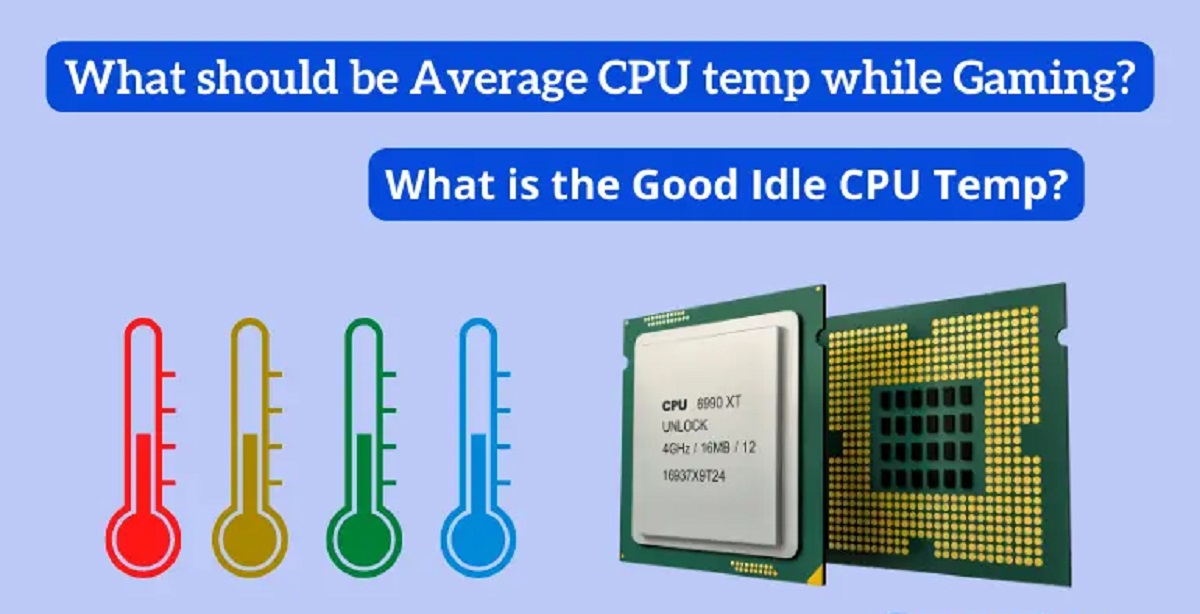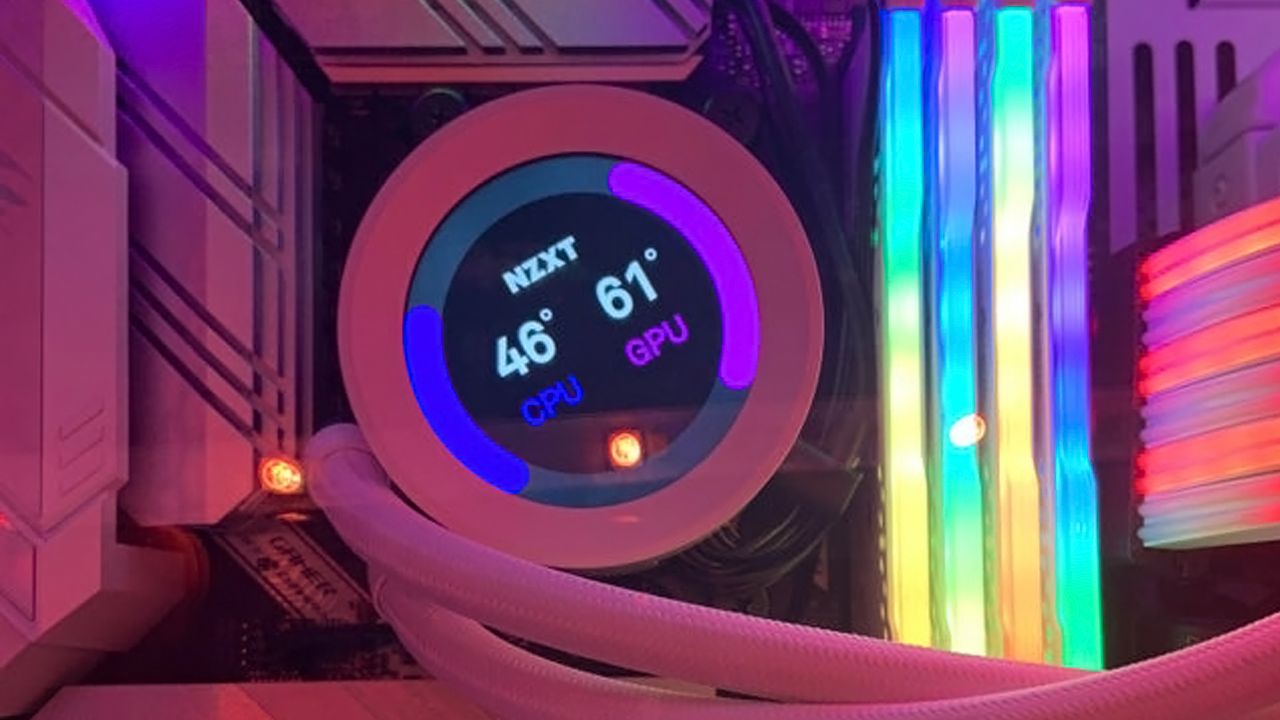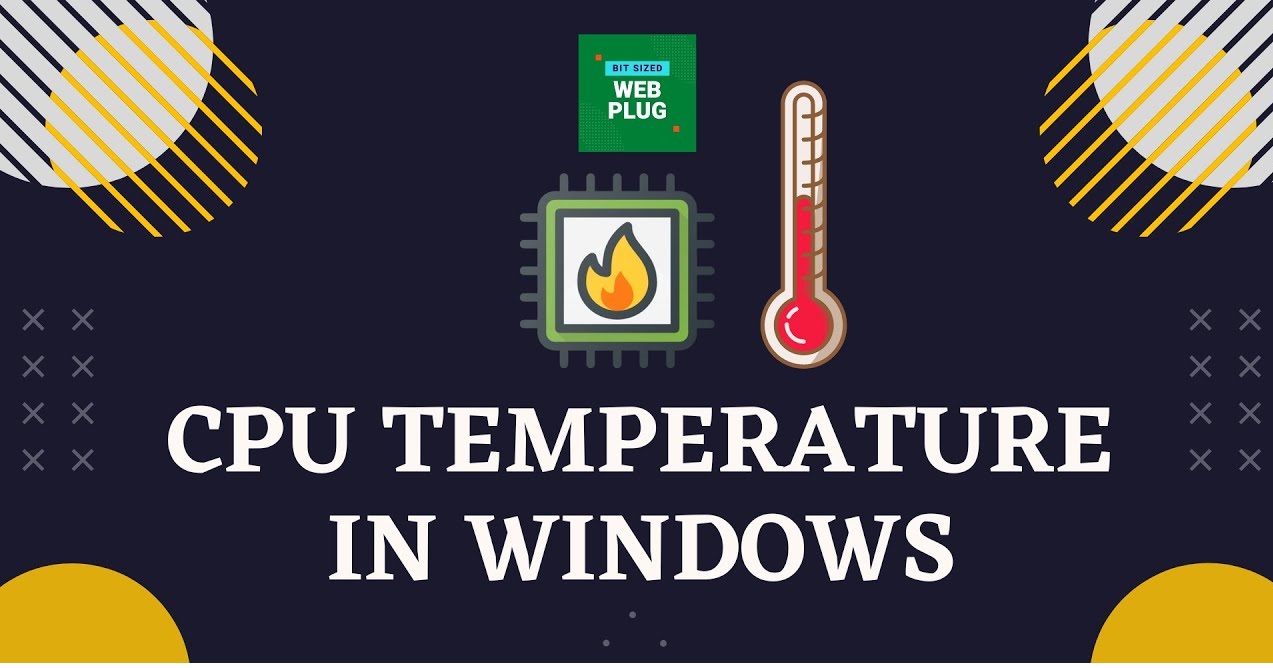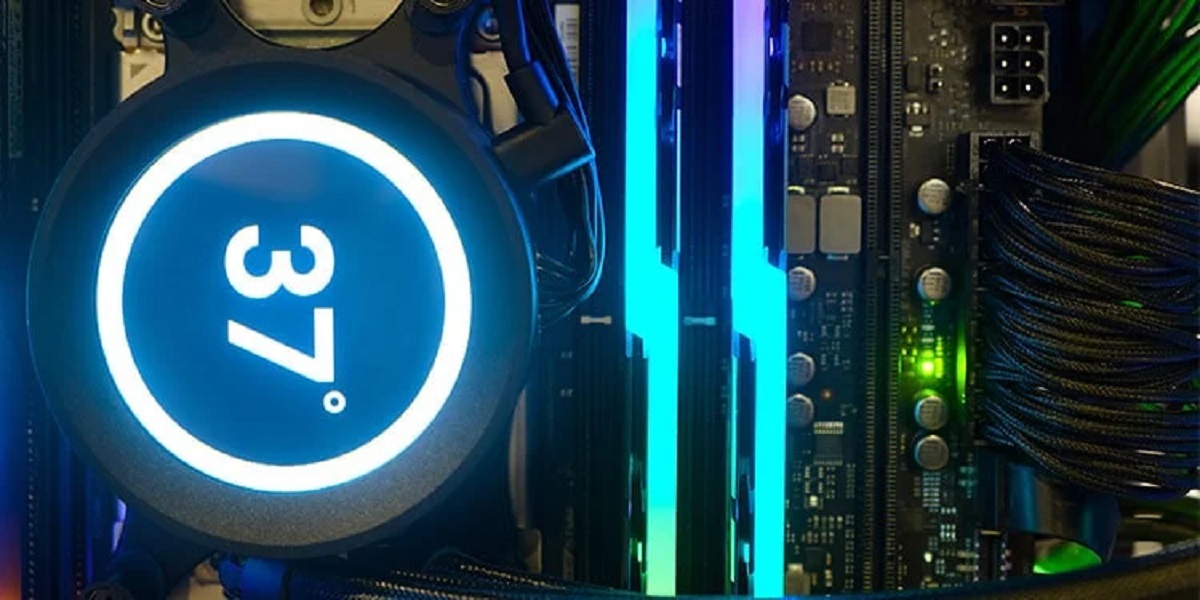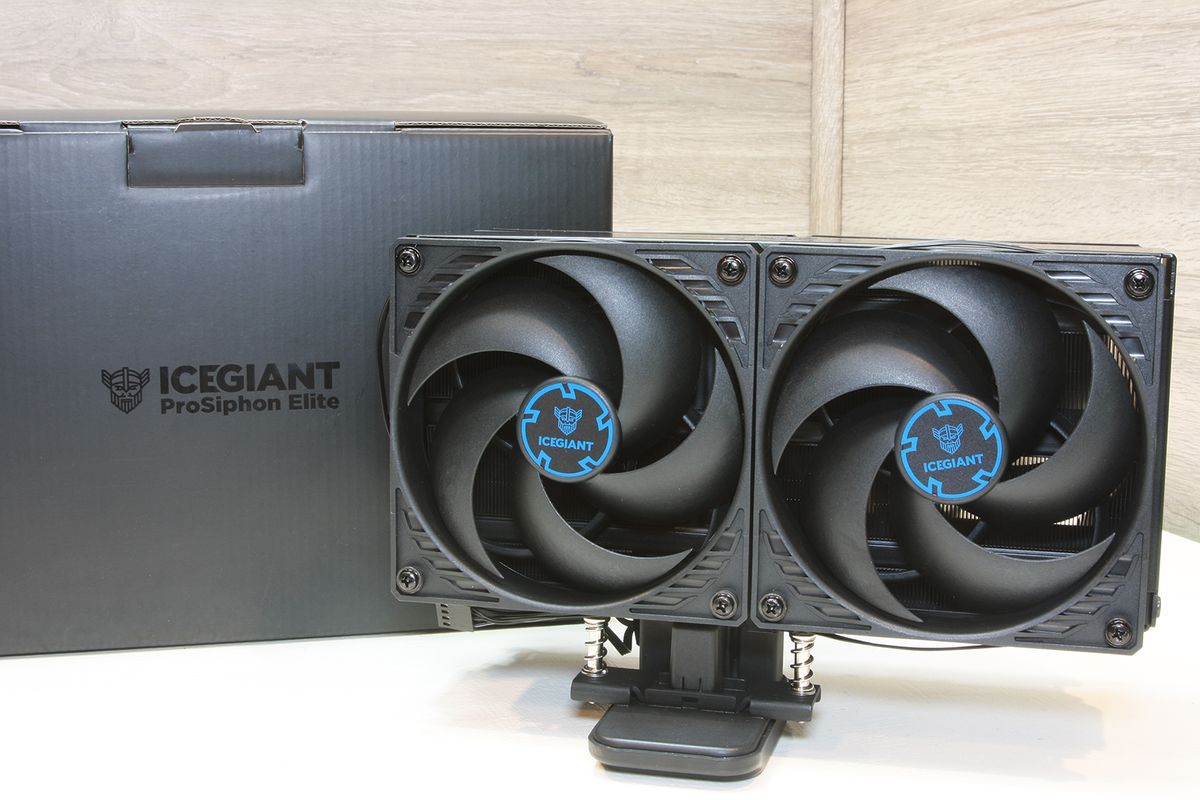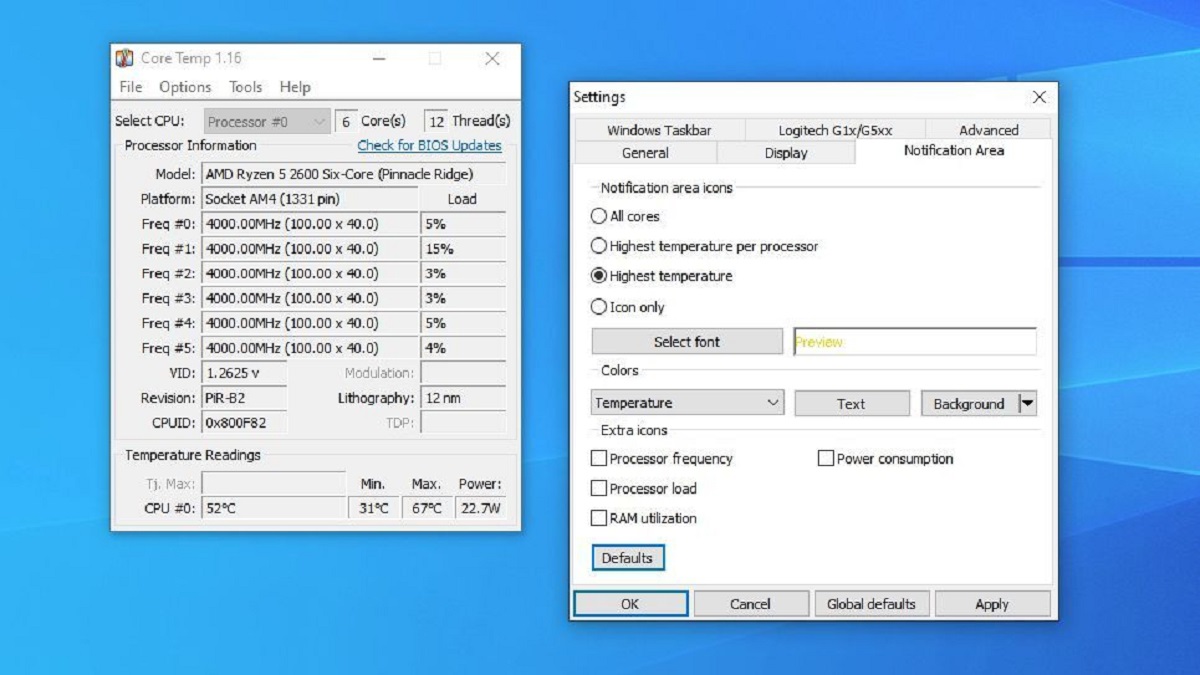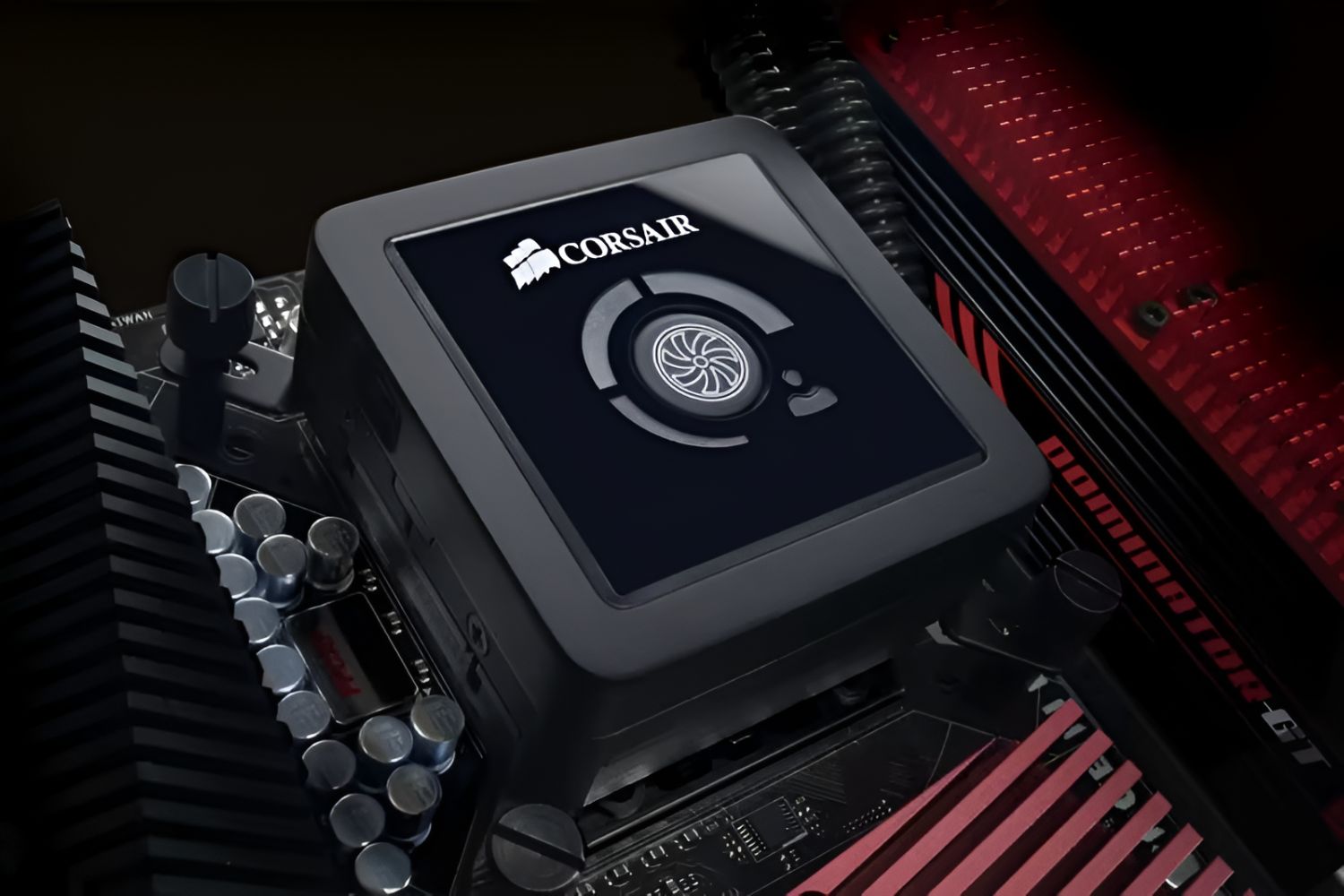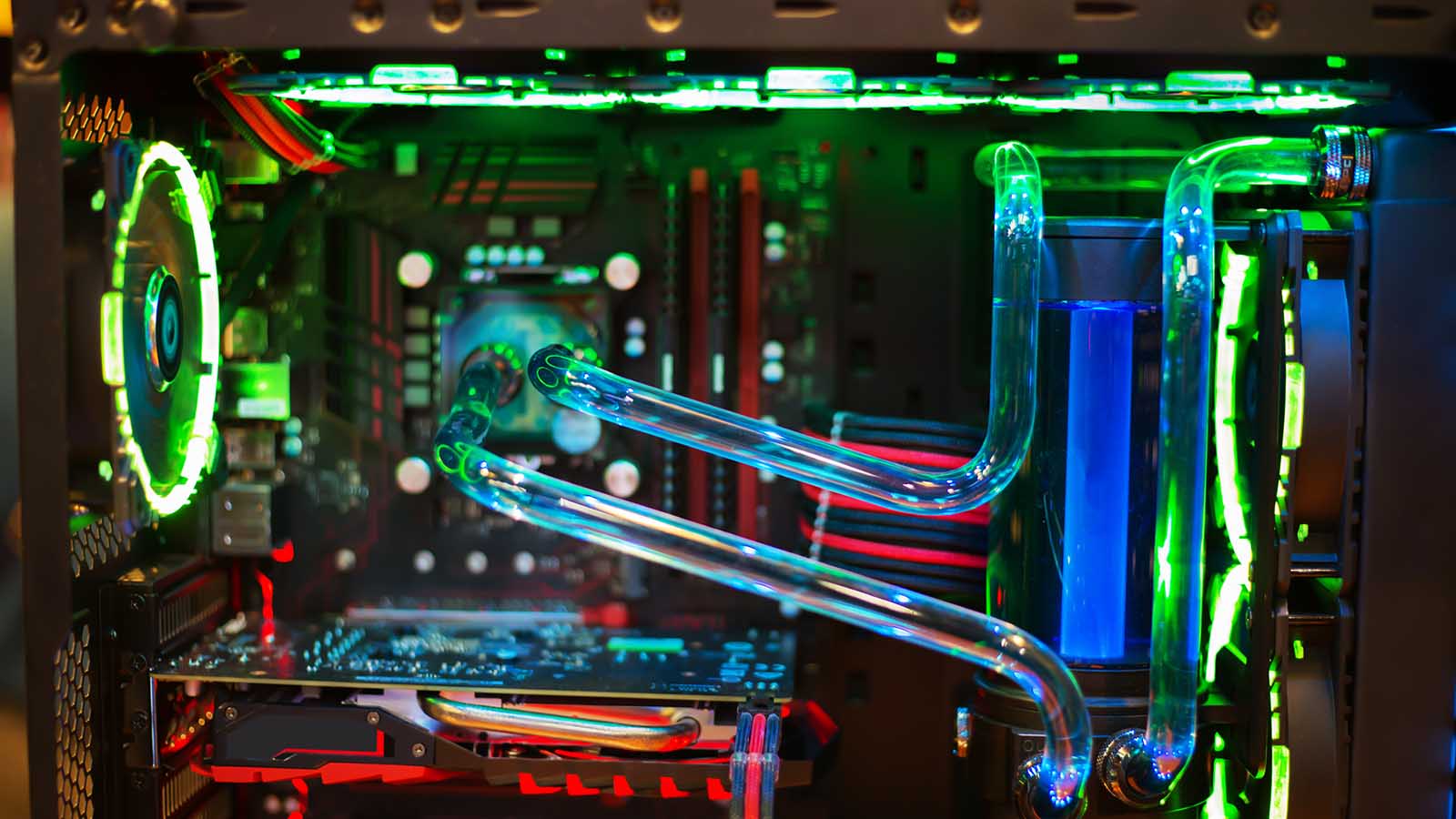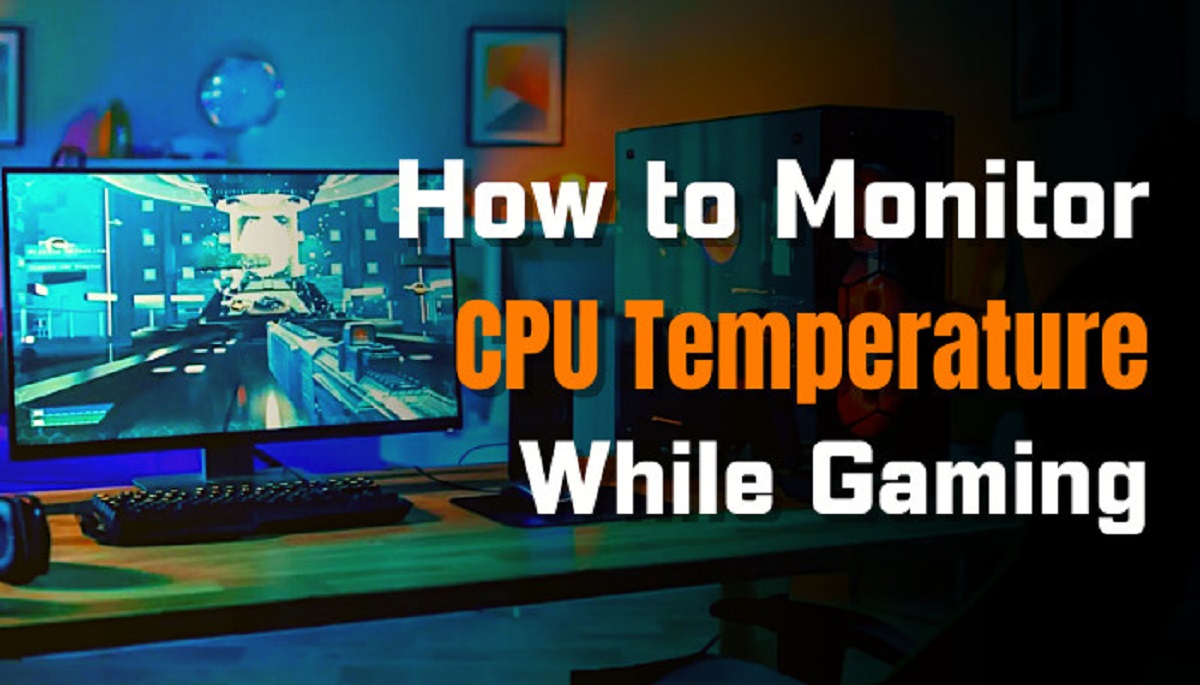What Is a Good CPU Temp When Gaming?
When it comes to gaming, keeping your CPU temperature at an optimal level is crucial for optimal performance and longevity of your system. A CPU, or Central Processing Unit, is the brain of your computer and generates a significant amount of heat while running intensive tasks, such as gaming.
So, what is considered a good CPU temperature when gaming? The ideal temperature range for a CPU during gaming is typically between 60 to 80 degrees Celsius (140 to 176 degrees Fahrenheit). However, it is important to note that specific temperature thresholds may vary depending on your processor model and cooling setup.
Modern CPUs, especially those designed for gaming, are built to handle higher temperatures without significant performance issues. In fact, many processors have safety features in place, such as thermal throttling, which reduces clock speeds to prevent overheating. However, consistently operating at excessively high temperatures can still degrade the performance and lifespan of your CPU over time.
It’s important to find the right balance between keeping your CPU cool and allowing it to reach its full potential. Monitoring your CPU temperature during gaming sessions can help you determine if your system is running within acceptable temperature limits.
Factors such as the cooling solution in your system, ambient temperature, overclocking, and the intensity of your gaming sessions can all affect your CPU temperature. If you have a high-performance cooling system, you may be able to achieve lower temperatures even under heavy loads. On the other hand, if you’re using a stock cooler or have poor airflow in your case, you may experience higher temperatures.
Remember that CPU temperatures can spike during intense gaming moments, but as long as they stay within the recommended range and return to normal levels quickly, it should not cause any major issues. However, sustained high temperatures can lead to thermal throttling, instability, or even permanent damage to your CPU.
Monitoring and maintaining a good CPU temperature while gaming is essential for keeping your system running smoothly and avoiding potential hardware failures. In the next section, we will discuss the importance of monitoring CPU temperature and the risks associated with high temperatures.
Introduction
When it comes to gaming, having a powerful CPU is essential for smooth gameplay and optimal performance. However, CPUs generate a substantial amount of heat when running intensive tasks such as gaming, which can impact their performance and longevity.
In this article, we will explore the importance of maintaining a good CPU temperature when gaming. We will discuss the optimal temperature range for CPUs during gaming sessions, the risks associated with high temperatures, and how to monitor and regulate your CPU temperature effectively.
Keeping your CPU temperature within the recommended range is vital for several reasons. Firstly, it ensures that your processor can operate at its full potential, delivering fast and smooth gaming experiences without experiencing performance bottlenecks or throttling. Secondly, maintaining proper CPU temperature helps prevent hardware damage and extends the lifespan of your processor.
Throughout this article, we will provide valuable insights and practical tips for achieving and maintaining a good CPU temperature when gaming. This knowledge will help you optimize your system’s performance, reduce the risk of overheating, and enhance the longevity of your gaming setup.
Whether you’re an avid gamer or someone who enjoys occasional gaming sessions, understanding the impact of CPU temperature on your gaming experience is crucial. By implementing the strategies outlined in this article, you can enhance the performance and reliability of your gaming rig, allowing you to fully immerse yourself in the world of gaming without worrying about potential hardware issues.
Now, let’s delve deeper into the factors that can affect CPU temperature and explore the optimal temperature range for CPUs during gaming sessions.
Factors Affecting CPU Temperature
Several factors can impact the temperature of your CPU during gaming sessions. Understanding these factors can help you identify potential issues and implement effective cooling strategies to keep your CPU temperature within the optimal range.
1. Cooling Solution: The type and quality of the cooling solution used to dissipate heat from your CPU play a critical role in determining its temperature. High-performance aftermarket coolers, such as liquid cooling systems or large heatsinks with powerful fans, can provide better heat dissipation compared to stock coolers. Upgrading your cooling solution can help lower CPU temperatures, especially during intense gaming sessions.
2. Thermal Paste Application: The correct application of thermal paste between the CPU and the cooler is crucial for efficient heat transfer. Improperly applied or dried out thermal paste can create air gaps, leading to higher CPU temperatures. Ensure that you apply an adequate amount of thermal paste and evenly spread it across the CPU’s heat spreader to maximize heat conductivity.
3. Airflow and Case Design: The airflow within your PC case affects how efficiently heat is expelled from the CPU. Ensure that your case has proper ventilation and consider adding additional case fans to improve airflow. Proper cable management can also contribute to better airflow within the case by reducing obstructions and allowing cool air to reach the CPU easily.
4. Overclocking: Overclocking, which involves increasing the clock speed of your CPU, can significantly impact its temperature. Overclocked CPUs generally generate more heat than those running at stock speeds. If you plan on overclocking your CPU, you must have adequate cooling to handle the increased heat output.
5. Ambient Temperature: The temperature of the room in which your computer is located can affect CPU temperatures. Higher ambient temperatures result in reduced cooling efficiency and can cause CPUs to operate at higher temperatures. Ensure that your gaming setup is in a well-ventilated area and avoid placing it near heat sources.
6. Gaming Intensity: The intensity of your gaming sessions, especially demanding games or those with high graphical settings, can cause the CPU to work harder and generate more heat. This can lead to higher temperatures compared to less demanding games. Monitoring your CPU temperature during gaming can help you assess the impact of different games on your CPU’s heat output.
By considering these factors and making adjustments accordingly, you can effectively manage and control your CPU temperature during gaming. However, it is equally important to understand the optimal temperature range for CPUs during gaming, which we will explore in the next section.
Importance of Monitoring CPU Temperature
Monitoring the temperature of your CPU while gaming is crucial for several reasons. By regularly checking and maintaining the CPU temperature within the recommended range, you can optimize performance, prevent hardware damage, and ensure the longevity of your gaming setup.
1. Performance Optimization: CPU temperature directly affects the performance of your gaming system. When the CPU operates within its optimal temperature range, it can maintain stable clock speeds and process instructions efficiently, resulting in smooth gameplay and reduced lag. Monitoring the temperature allows you to identify any temperature-related performance issues and take necessary steps to rectify them.
2. Preventing Hardware Damage: High CPU temperatures can put significant stress on the processor and other components, increasing the risk of permanent damage. Prolonged exposure to excessive temperatures can lead to thermal throttling, which reduces the CPU’s performance to protect it from overheating. Regularly monitoring CPU temperature can help you identify potential cooling problems or inadequate ventilation before they cause irreversible damage to your components.
3. Ensuring Longevity: Consistently operating the CPU at high temperatures can shorten its lifespan. Excessive heat can cause electron migration, degradation of transistor materials, and other components to fail prematurely. By keeping your CPU temperature within the recommended range, you can extend the lifespan of your processor and avoid the need for costly replacements or upgrades.
4. Overclocking Stability: Overclocking your CPU can provide a performance boost but also increases the heat output. Monitoring the temperature becomes even more crucial when overclocking to ensure the stability of your system. Overheating can lead to instability, crashes, and system failures. By monitoring the CPU temperature, you can identify any signs of overheating and adjust your overclocking settings accordingly.
5. Early Warning System: Monitoring your CPU temperature serves as an early warning system for any cooling-related issues. Sudden spikes or prolonged high temperatures can indicate problems with your cooling solution, such as a failing fan or a clogged heatsink. By promptly addressing these issues, you can prevent further damage and ensure that your gaming system operates optimally for an extended period.
Regularly monitoring your CPU temperature during gaming sessions allows you to proactively manage temperature-related issues, optimize performance, and prevent potential hardware failures. In the next section, we will discuss the optimal CPU temperature range for gaming and the risks associated with high CPU temperatures.
Optimal CPU Temperature for Gaming
The optimal CPU temperature range for gaming ensures that your processor operates efficiently, enhances performance, and avoids potential hardware issues. While specific temperature thresholds may vary depending on your CPU model and cooling setup, there is a general guideline to follow.
The ideal CPU temperature during gaming is typically between 60 to 80 degrees Celsius (140 to 176 degrees Fahrenheit). This range allows the CPU to perform optimally without experiencing thermal throttling, which reduces clock speeds to prevent overheating.
It’s important to note that different CPUs and their respective architectures can handle varying temperature tolerances. Some gaming-oriented processors are designed to handle higher temperatures, while others may have more rigid temperature limits.
Modern CPUs often feature built-in safety mechanisms, such as thermal sensors and automatic thermal throttling, to protect against overheating. These measures help maintain a safe operating temperature and protect the longevity of the CPU.
When monitoring your CPU temperature during gaming, it’s essential to consider the average temperature over time rather than focusing solely on occasional spikes. Short-lived temperature spikes during intense gaming moments are generally normal and should not cause concerns as long as they quickly return to normal levels.
However, sustaining high temperatures for extended periods can result in various risks. Prolonged exposure to elevated temperatures can increase the likelihood of thermal throttling, reduce system stability, and potentially lead to long-term damage to the CPU and other components.
It’s critical to maintain the CPU temperature within the optimal range by implementing effective cooling solutions. Upgrading to more robust cooling systems, ensuring proper airflow in the case, and applying high-quality thermal paste can all contribute to keeping the CPU temperature in check.
It’s worth mentioning that certain factors, such as overclocking or demanding game settings, may lead to higher CPU temperatures. If you engage in overclocking, you should closely monitor your CPU temperature to ensure it remains within safe limits. Likewise, adjusting graphics settings to relieve the CPU load can help keep temperature levels in check.
By maintaining the CPU temperature within the optimal range, you can ensure consistent performance, extend the lifespan of your CPU, and mitigate the risks associated with overheating. In the next section, we will discuss the potential risks and consequences of running your CPU at high temperatures for extended periods.
Risks of High CPU Temperature
Running your CPU at high temperatures for extended periods of time can pose several risks and have detrimental effects on the performance and longevity of your computer. It is important to understand these risks in order to take necessary precautions and prevent potential hardware damage.
1. Thermal Throttling: One of the immediate consequences of high CPU temperatures is thermal throttling. When the CPU reaches a certain temperature threshold, it automatically reduces its clock speed to dissipate heat and prevent overheating. This results in a significant drop in performance, causing lag and stuttering during gaming sessions.
2. System Instability: High CPU temperatures can lead to system instability, crashes, freezes, and unexpected shutdowns. Excessive heat can disrupt the normal functioning of components, including the CPU, causing the system to become unstable. This can result in data loss, interrupted gaming sessions, and potential damage to hardware or software.
3. Component Damage: Prolonged exposure to high temperatures can cause permanent damage to the CPU and other components in your computer. The excessive heat can degrade solder joints, warp circuit boards, and shorten the lifespan of sensitive electronic components. Over time, this can lead to a higher risk of failure, requiring costly repairs or component replacements.
4. Reduced Performance: High CPU temperatures affect the overall performance of your system. When the CPU operates at elevated temperatures, it is unable to maintain high clock speeds consistently. This leads to decreased performance in both gaming and other resource-intensive tasks, resulting in slower load times, decreased frame rates, and diminished overall user experience.
5. Increased Fan Noise: When the CPU temperature rises, the cooling fans in your system must work harder to dissipate the heat. This can result in increased fan noise, making your gaming experience less enjoyable and potentially distracting. If your CPU consistently runs at high temperatures, the fans may need to spin at maximum speed constantly, leading to a noisier environment.
6. Limited Overclocking Potential: Overclocking, which involves running the CPU at higher clock speeds than its default settings, can lead to increased heat output. If your CPU is already running at high temperatures, this reduces the headroom for overclocking and limits your ability to extract additional performance from the processor.
It is crucial to address high CPU temperatures promptly to mitigate these risks. By implementing effective cooling solutions, monitoring the temperature regularly, and ensuring proper airflow within your system, you can maintain optimal temperatures and minimize the chances of facing these issues.
In the next section, we will explore different methods to monitor CPU temperature during gaming sessions, empowering you to take proactive measures to keep your system cool and maximize its performance.
How to Monitor CPU Temperature
Monitoring your CPU temperature during gaming sessions is essential to ensure that it remains within the optimal range and to identify any potential cooling issues. Fortunately, there are several methods and tools available to help you accurately monitor your CPU temperature.
1. BIOS/UEFI: Most modern motherboards offer built-in temperature monitoring capabilities in their BIOS or UEFI settings. By accessing the BIOS/UEFI, you can often find temperature readings for your CPU. This method provides a baseline temperature reading during idle conditions and can help you monitor changes in temperature during gaming sessions.
2. Third-Party Software: There are various third-party software applications available that provide real-time CPU temperature monitoring. Programs such as HWMonitor, Core Temp, and SpeedFan are popular options and offer detailed information about your CPU’s temperature, as well as other important system parameters like fan speeds and voltages.
3. CPU Temperature Monitoring Apps: If you’re using a laptop or a mobile device for gaming, you can install CPU temperature monitoring apps. These apps display the CPU temperature directly on your device’s screen, allowing you to monitor it in real-time while gaming. Examples of popular CPU temperature monitoring apps include HWMonitor for Android and iStat Menus for macOS.
4. Integrated Software: Some motherboard manufacturers provide their own software with CPU temperature monitoring features. These utilities, such as MSI Afterburner or ASUS AI Suite, are often bundled with the motherboard’s drivers and provide comprehensive monitoring options, including temperature, clock speeds, and voltage.
Regardless of the method you choose, it’s important to ensure that the monitoring software or app you use is reliable and provides accurate temperature readings. Comparing readings from different sources can help validate the accuracy of the measurements.
Once you have a reliable monitoring tool in place, make it a habit to monitor CPU temperature regularly, especially during gaming sessions. This will allow you to identify any sudden temperature spikes or sustained high temperatures, indicating potential issues that need to be addressed.
Remember that temperature readings can vary depending on the CPU model, cooling solution, and other factors. Therefore, it is important to refer to the recommended temperature range specified by the CPU manufacturer to ensure you are within safe operating limits.
In the next section, we will provide practical tips to help you maintain a lower CPU temperature during gaming and optimize the cooling performance of your system.
Tips for Keeping CPU Temperature Low
Maintaining a lower CPU temperature during gaming is vital for optimal performance and the longevity of your system. Here are some practical tips to help you keep your CPU temperature in check:
1. Upgrade Your Cooling Solution: Investing in a high-quality aftermarket CPU cooler can significantly improve your cooling performance. Consider options like liquid cooling systems or large heatsinks with powerful fans to dissipate heat more effectively. Upgrading your cooling solution can help lower CPU temperatures, especially during demanding gaming sessions.
2. Ensure Proper Airflow: Good airflow within your PC case is crucial for cooling. Make sure your case has adequate ventilation and that your fans are positioned properly. Place intake fans at the front of the case and exhaust fans at the rear or top to facilitate the flow of cool air into the case and expel hot air. Removing any obstructions and improving cable management can also help enhance airflow.
3. Apply Quality Thermal Paste: Applying a high-quality thermal paste between the CPU and the cooler can help improve heat transfer. Clean the old paste and apply a thin, even layer of thermal paste to ensure maximum contact between the CPU and cooler. This will allow for better heat dissipation and lower CPU temperatures.
4. Manage Overclocking: Overclocking your CPU can increase its temperature output. If you have overclocked your CPU, make sure to monitor the temperature closely and ensure that your cooling solution is adequate to handle the increased heat. It may be necessary to adjust your overclocking settings or consider reverting to stock speeds if temperatures remain too high.
5. Optimize Graphics Settings: CPU temperature can be affected by graphics-intensive games. Adjusting graphic settings like resolution and details can help reduce the CPU load, resulting in lower temperatures. Experiment with different settings to find the right balance between performance and thermal management.
6. Clean Your System Regularly: Dust accumulation can hinder airflow and heat dissipation, resulting in higher CPU temperatures. Regularly clean your system, including removing dust from fans, heatsinks, and filters. Use compressed air or an antistatic vacuum cleaner to safely remove dust without damaging components.
7. Monitor and Adjust Fan Speeds: Use software utilities or BIOS/UEFI settings to monitor and adjust fan speeds. Increasing the fan speeds can enhance airflow and cooling, while reducing them can help reduce noise levels when the CPU is not under heavy load.
8. Keep Your Environment Cool: Ensure that your gaming setup is in a well-ventilated area and away from sources of heat. Avoid placing your PC near radiators, direct sunlight, or other heat-generating devices as this can increase ambient temperatures and impact CPU cooling.
By implementing these tips, you can effectively manage and lower your CPU temperature while gaming. Remember to regularly monitor your CPU temperature and make adjustments if necessary to maintain optimal performance and extend the lifespan of your system.
In the next section, we will conclude our discussion and summarize the key takeaways to help you maintain a good CPU temperature when gaming.
Conclusion
Maintaining a good CPU temperature is crucial for optimal gaming performance and the longevity of your computer. By keeping your CPU within the recommended temperature range, you can prevent thermal throttling, system instability, and potential damage to your components. Monitoring your CPU temperature regularly is essential in identifying any cooling issues and taking appropriate measures to keep temperatures in check.
Factors such as the cooling solution, ambient temperature, overclocking, and gaming intensity can affect CPU temperatures. Upgrading your cooling solution, ensuring proper airflow, applying quality thermal paste, and managing overclocking are effective strategies for reducing CPU temperatures during gaming.
By adjusting graphics settings, cleaning your system regularly, and optimizing fan speeds, you can further optimize CPU cooling and manage temperature levels effectively. Monitoring tools and software provide real-time temperature readings, allowing you to stay informed and take proactive steps to maintain an optimal CPU temperature.
Remember, sustaining high CPU temperatures for extended periods can lead to thermal throttling, reduced performance, and possible hardware damage. By prioritizing CPU temperature management and implementing the tips outlined in this article, you can enhance your gaming experience while ensuring the longevity of your system.
Maintaining a good CPU temperature when gaming is a continuous process. As technology advances and demands on CPUs evolve, staying vigilant and adapting cooling solutions to match the demands of modern gaming is key. By understanding the risks of high temperatures, monitoring your CPU temperature, and implementing effective cooling strategies, you can enjoy smooth and successful gaming sessions for years to come.







